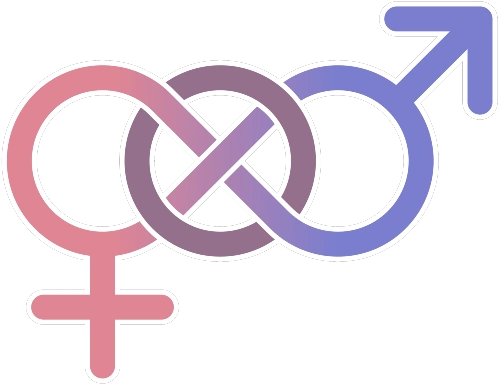m (I added fun facts. Being homo aint bad) Tag: Visual edit |
m (Reverted edits by PickleMakesOcs (talk) to last version by Mr Taz) |
||
| Line 21: | Line 21: | ||
===Terminology=== |
===Terminology=== |
||
| − | A female homosexual is often referred to as being lesbian. This term comes from the Isle of Lesbos. The poet Sappho was born in Lesbos and wrote poems with powerful emotional content directed toward other women. |
+ | A female homosexual is often referred to as being lesbian. This term comes from the Isle of Lesbos. The poet Sappho was born in Lesbos and wrote poems with powerful emotional content directed toward other women. |
| − | |||
| − | —Fun Facts |
||
| − | |||
| − | Being homosexual is NOT a sin |
||
| − | |||
| − | God DOES like homosexual folks, fight me |
||
==References== |
==References== |
||
Revision as of 22:47, 2 September 2020

Symbol of homosexuality (male version)

Symbol of homosexuality (female version)
Homosexuality is romantic attraction, sexual attraction or sexual behavior between members of the same sex or gender. As a sexual orientation, homosexuality is "an enduring pattern of emotional, romantic, and/or sexual attractions" primarily or exclusively to people of the same gender. It "also refers to a person's sense of identity based on those attractions, related behaviors, and membership in a community of others who share those attractions."[1][2]
Concept
The concept of sexual orientation, of identifying a person based on their sexual preferences, is a social construction, not a biological one. "In ancient Rome, Latin had no equivalent translation for defining homosexuality, nor heterosexuality as an individual’s sexual nature. Gay or straight, there would be no distinction."[3]
The practice of categorizing people based on sexual orientations didn't begin until the 19th century. "Before the late 19th to mid 20th centuries, there were no homosexuals. Neither were there heterosexuals, bisexuals or pedophiles. The concepts didn't exist."[4]
In the 1980s, the concept was still quite vague. "Despite the fact that the concept homosexual identity has been used extensively in the literature on homosexuality since the late 1960s, investigators have shown little concern for defining or discussing the manner in which it is used. As a result, the study of homosexual identity has been characterized by confusion, disarray, and ambiguity."[5]
Male
Terminology
A homosexual male is commonly referred to as being gay, although this term is sometimes also used for females. In Spanish, puta means a female prostitute, slut or bitch; while the male form puto literally refers to a male prostitute or to sexual intercourse, it can be used as a disparaging term for a male homosexual.
Female
Terminology
A female homosexual is often referred to as being lesbian. This term comes from the Isle of Lesbos. The poet Sappho was born in Lesbos and wrote poems with powerful emotional content directed toward other women.
References
- ↑ Sexual orientation, homosexuality and bisexuality. American Psychological Association. Archived from the original on August 8, 2013. Retrieved on August 10, 2013.
- ↑ Case No. S147999 in the Supreme Court of the State of California, In re Marriage Cases Judicial Council Coordination Proceeding No. 4365(...) – APA California Amicus Brief — As Filed (PDF) 30. Retrieved on 21 December 2010.
- ↑ Milligan, Markus (2013). Roman Sex, Sexuality, Slaves and Lex Scantinia. Heritage Daily.
- ↑ "The Naked Ape" in Ek-sen-trik-kuh Discordia: The Tales of Shamlicht Anaphora Literary Press
- ↑ Cass, V.C. (1983-1984). Homosexual identity: a concept in need of definition. Heritage Daily.
This article uses Creative Commons licensed content from Wikipedia (view authors).

